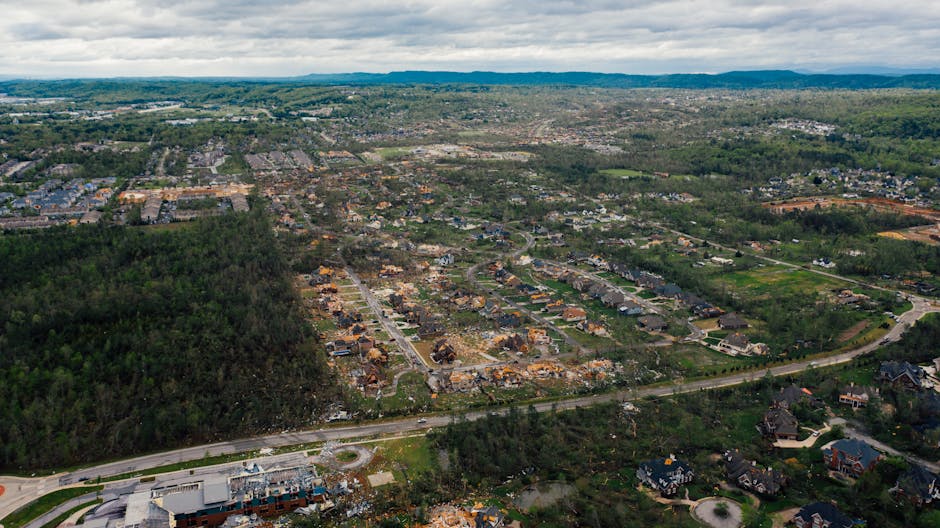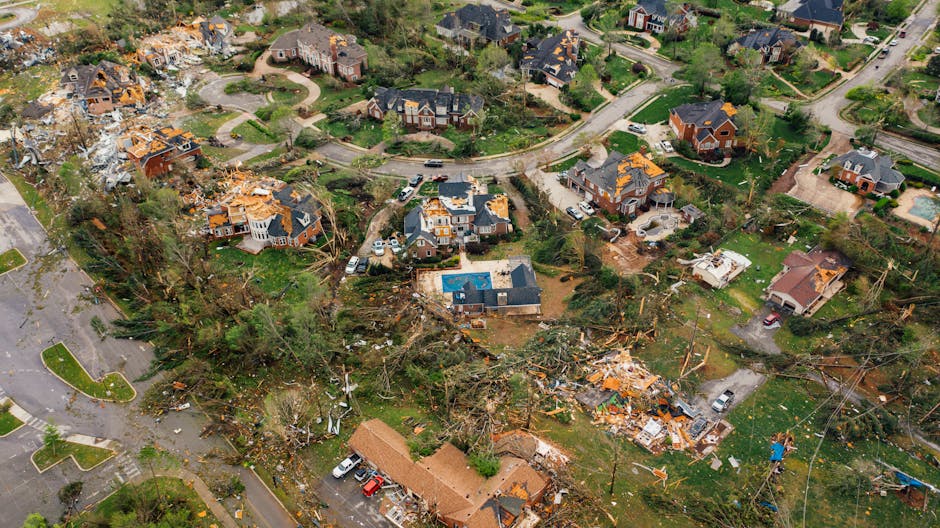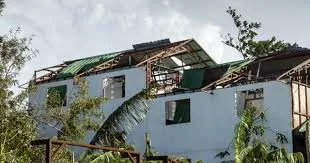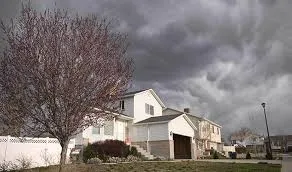When fierce winds lash against your home, the aftermath can be financially and emotionally draining. Understanding wind damage claim house insurance policy’s stance on wind damage is paramount in securing peace of mind. This article delves into the nuances of wind damage coverage, distinguishing between standard home insurance and windstorm insurance, and guiding you through the process of filing a successful claim. We’ll walk you through step-by-step strategies for documenting damage, navigating claims, and negotiating with adjusters to maximize your compensation.
But it doesn’t end there. To fortify your home against future tempests, we share expert tips on wind-resistant improvements, regular maintenance practices, and the underestimated role of landscaping. Armed with this knowledge, you’ll be better equipped to protect your property and ensure your insurance is a safety net you can count on when the winds of change blow.
Understanding Wind damage claim house insurance
Types of Wind Damage Covered by Insurance
When considering home insurance, it’s crucial to understand the scope of wind damage claim house insurance coverage. This specific coverage is designed to protect your home against a variety of wind-related damages. For instance, damages resulting from hurricanes, tornadoes, and other high-wind events are typically covered. However, the specifics can vary widely between policies and providers.
“Wind damage can encompass everything from minor roof shingle loss to major structural damage.”
- Roof Damage: This is the most common claim following wind storms, covering repairs or replacement of shingles and underlying structures.
- Window Damage: Wind can break windows or cause flying debris to do so, which is generally covered.
- Siding and Exterior Damage: Including dents or removal of siding due to high winds.
Understanding the types of wind damage claim house insurance your policy covers is the first step in ensuring you’re adequately protected. It’s also advisable to document your home’s condition and possessions to facilitate claims processing should the need arise.
How to Check if Your Policy Includes Wind Damage
Ensuring your home insurance policy includes wind damage claim house insurance coverage is paramount for homeowners in wind-prone areas. Start by thoroughly reviewing your policy documents. Look for sections specifically mentioning wind or named storms. If the language seems ambiguous or you’re unsure, don’t hesitate to contact your insurance provider for clarification.
- Review Your Policy Declarations Page: This summary of your coverage should highlight wind damage if included.
- Look for Specific Windstorm Exclusions: Some policies explicitly exclude certain types of wind damage or specific storms.
- Contact Your Insurance Agent: For direct answers and clarification on your coverage scope.
Adjusting your coverage may be necessary if you find your current policy lacking. Remember, being proactive about your insurance coverage can save you significant stress and expense when dealing with the aftermath of a windstorm.
Differences Between Windstorm Insurance and Standard Home Insurance
While standard home insurance policies often cover a variety of damages, including some caused by wind, windstorm insurance is a specialized form of coverage that focuses exclusively on damage caused by wind. This distinction is critical in areas prone to hurricanes or tornadoes, where the risk of wind damage is higher.
“Windstorm insurance is designed to fill in the gaps left by standard home insurance policies, offering peace of mind in high-risk areas.”
One key difference is the deductible. Windstorm insurance policies often have higher deductibles for wind-related damages, meaning homeowners may pay more out-of-pocket before coverage kicks in. Additionally, some areas may require homeowners to purchase separate windstorm insurance to be fully protected against all types of wind damage.
- Comprehensive Coverage: Windstorm insurance provides focused coverage for wind-related damages, beyond what standard policies offer.
- Higher Deductibles: Reflecting the increased risk and potential cost of wind damage claims.
- Geographic Necessity: In certain areas, separate windstorm insurance is not just recommended but required.
Assessing your home’s location and potential risk for wind damage is essential. For many homeowners, investing in windstorm insurance is a strategic decision to ensure comprehensive protection against the unpredictable forces of nature.
Filing a Successful Wind Damage Claim House Insurance: A Step-by-Step Guide

Documenting Wind Damage Effectively
When wind wreaks havoc on your property, the first step towards a successful wind damage claim house insurance is meticulous documentation. This involves taking clear, comprehensive photos of all the affected areas. Ensure these images are well-lit and highlight the extent of the damage. Additionally, if you have ‘before’ pictures of your property, they can serve as a powerful contrast to demonstrate the impact of the wind damage.
Accurate documentation is the bedrock of a strong insurance claim, offering irrefutable evidence of the damage incurred.
- Immediate photo evidence: Capture images of the damage as soon as it is safe to do so. This provides a timestamp of the damage which can be crucial during the claims process.
- Description of damage: Alongside photos, write a detailed description of the damage, noting the date and time. This can help in painting a comprehensive picture for the insurance company.
- Keep damaged items: If safe, retain damaged property items. These can serve as physical evidence for the claim.
Remember, the goal is to make it as easy as possible for the insurance adjuster to understand the extent of the damage. This step, while seemingly simple, can significantly influence the outcome of your claim.
Navigating the Claims Process with Your Insurance Company
- Immediate notification: Contact your insurance company as soon as possible to report the wind damage. This prompt action is often a policy requirement and sets the stage for your claim.
- Understanding your policy: Familiarize yourself with the specifics of your insurance policy. Knowing what is covered and the process for filing a claim will empower you during discussions with your insurer.
- Preparation for the adjuster’s visit: Be ready to show the adjuster all the documented damage and answer their questions. This interaction is a critical component of the claims process.
Engage in open communication with your insurance company throughout the process. If you have concerns or questions, don’t hesitate to ask for clarification. Keeping a detailed record of all communications can also be beneficial, ensuring you have a log of what was discussed and agreed upon.
Transparency and preparedness are your allies in navigating the claims process efficiently.
Tips for a Smooth Claim Approval
To enhance the chances of a favorable outcome in your wind damage claim house insurance, it’s vital to approach the process with diligence and attention to detail. Here are some additional tips:
- Professional assessment: Consider hiring a professional to evaluate the damage. Their expert perspective can provide a more detailed report to support your claim.
- Timely submission: Ensure all paperwork is submitted in accordance with your insurance company’s deadlines. Delays can hinder the process and affect the outcome.
- Stay organized: Keep a folder with all related documents, receipts, and correspondence. This organization can be incredibly helpful during the claims process.
By following these steps and maintaining a proactive approach, you position yourself as a well-informed homeowner. This not only facilitates a smoother claim process but also maximizes the likelihood of your claim being approved. Remember, knowledge and preparation are powerful tools in ensuring your home is restored to its pre-damage condition.
Maximizing Your Wind Damage Claim House Insurance: Expert Strategies
Hiring a Professional Assessor
When faced with the daunting task of filing a wind damage claim house insurance, the importance of hiring a professional assessor cannot be overstated. This expert can thoroughly evaluate the extent of the damage, ensuring that nothing is overlooked. Their assessment forms the cornerstone of a robust claim, detailing the specific repairs needed and their associated costs.
A professional assessor brings an eye for detail and an understanding of what insurance providers require, making their report a powerful tool in your claim process.
Moreover, assessors are adept at identifying hidden damage that homeowners might miss. This could include structural issues not immediately visible but could lead to significant problems down the line. By uncovering these issues early, the assessor helps secure a more comprehensive claim.
- Comprehensive evaluation: A detailed assessment that covers both visible and hidden damages.
- Expert recommendations: Professional advice on repairs and replacements needed.
- Documentation: A thorough report that serves as evidence for your claim.
Armed with a professional assessment, homeowners are better positioned to argue their case with insurance companies. This step is not just about maximizing your claim but ensuring your home is restored to its pre-damage condition.
Understanding the Depreciation Value of Your Property
Grasping the concept of depreciation value is crucial when filing a wind damage claim house insurance. Many homeowners are unaware of how depreciation impacts their compensation, potentially leaving significant amounts on the table. Depreciation refers to the decrease in value of your property and its components over time, which insurers take into account when settling claims.
Understanding this concept allows homeowners to better anticipate the settlement amount and argue for a fair assessment. Remember, the age and condition of your property before the damage occurred are key factors in determining its depreciation value.
- Initial property value: The worth of your property before damage, influencing the compensation amount.
- Depreciation rate: How quickly the value of your property decreases over time.
- Actual cash value: The depreciated value of your property at the time of the claim.
Equipped with knowledge about depreciation, homeowners can have informed discussions with their insurance adjuster, ensuring the settlement reflects the true value of their claim. It’s about securing justice for your property, not just a payout.
“Understanding depreciation is the key to unlocking fair compensation for your wind-damaged property.”
The journey to maximizing your wind damage claim house insurance involves navigating the complexities of depreciation. Engage in this process fully armed with knowledge, and you position yourself to reclaim the true value of your loss.
Negotiating with Insurance Adjusters
The process of negotiating with insurance adjusters is a critical step in maximizing your wind damage claim. Adjusters are tasked with evaluating your claim from the insurer’s perspective, often leading to initial offers that may not fully cover your damages. Understanding this dynamic is key to effective negotiations.
Preparation is your best tool. Arm yourself with a detailed report from your professional assessor, an understanding of depreciation, and a clear account of the damages and their impact on your property. This information proves invaluable when articulating your needs and expectations to the adjuster.
Effective negotiation is not about confrontation but about presenting clear, factual evidence to support your claim.
- Detailed documentation: Essential for backing up your claim and negotiating points.
- Understanding of policy: Knowing the specifics of your insurance policy helps identify what you are rightfully owed.
- Persistence: Staying engaged and persistent, ready to counter low offers with factual evidence.
Remember, insurance adjusters expect negotiations. By approaching these discussions with a well-prepared case, you increase your chances of securing a fair settlement. This process is about ensuring you receive the compensation needed to fully repair and restore your home.
Negotiating with your insurance adjuster is not just about numbers; it’s about the future of your home. With the right preparation and understanding, you can navigate these discussions to a successful outcome, ensuring your property is made whole again.
Preventing Future Wind Damage: Proactive Measures for Homeowners

Implementing Wind-Resistant Home Improvements
When considering how to shield your home from the ravages of wind, implementing wind-resistant home improvements stands out as a critical step. This involves upgrading the structural integrity of your home to withstand high wind speeds. For instance, installing impact-resistant windows and doors can prevent them from shattering under the pressure of flying debris. Likewise, reinforcing your roof with hurricane straps can significantly reduce the risk of it being torn off during a storm.
- Impact-Resistant Windows and Doors: These are designed to withstand high winds and flying debris, thereby protecting the interior of your home from damage.
- Roof Reinforcements: Adding hurricane straps or clips can help secure your roof to the walls, providing extra stability during high winds.
- Garage Door Bracing: Since garage doors are often large and vulnerable, reinforcing them can prevent a major point of failure during a storm.
Another essential aspect is the sealing of gaps and openings around the home. This not only improves energy efficiency but also prevents wind from entering and causing internal pressure build-up, which can lead to structural damage. Employing a professional to conduct a wind mitigation inspection can offer personalized recommendations for your home’s specific needs.
By taking these proactive steps, you not only enhance your home’s resilience to wind but also potentially lower your insurance premiums, as many insurers offer discounts for homes that are better equipped to handle storms. This makes wind-resistant improvements a wise investment for the safety and security of your property.
Regular Maintenance to Mitigate Wind Damage
Regular maintenance is paramount in mitigating wind damage. This encompasses a broad range of tasks, from inspecting and repairing your roof to ensuring that gutters and downspouts are clean and functional. A well-maintained roof is less likely to suffer significant damage during a storm, as missing or weakened shingles can be easily exploited by strong winds.
- Roof Inspection: Regular checks for damaged or missing shingles and immediate repairs can significantly reduce the risk of wind damage.
- Gutter Maintenance: Keeping gutters and downspouts clear prevents water accumulation that can cause roof leaks and structural damage over time.
- Tree Trimming: Removing dead or weak branches from trees around your property can prevent them from becoming windborne projectiles during a storm.
Moreover, securing loose objects in your yard, such as outdoor furniture and decorations, can prevent them from being picked up by the wind and causing damage. It’s also advisable to have a professional assessment of your home’s structural integrity if it’s older or has experienced previous storm damage. This can uncover vulnerabilities that, if addressed, can greatly enhance your home’s ability to withstand wind.
Engaging in these regular maintenance activities not only prepares your home for the next storm but also instills a sense of readiness and peace of mind, knowing that you’ve taken actionable steps to protect your property and loved ones.
The Role of Landscaping in Protecting Against Wind Damage
Strategic landscaping plays a surprisingly pivotal role in defending your property against wind damage. By planting wind-resistant trees and shrubs, you can create a natural barrier that reduces wind speed before it reaches your home. Species such as live oaks, maples, and hollies are known for their resilience and can serve as an effective windbreak when planted strategically around the property.
“Landscaping, when done correctly, can be your first line of defense against the destructive force of wind. It’s not just about beauty; it’s about resilience.”
- Wind-Resistant Trees: Choose species that are known for their strength and flexibility in the face of high winds.
- Proper Placement: Plant trees and shrubs at strategic points around your property to act as a windbreak and shield your home.
- Maintenance: Regular pruning and care ensure that your landscaping remains healthy and effective in its protective role.
Additionally, consider the use of hardscaping elements like walls and fences. These structures can also help deflect wind away from more vulnerable areas of your home. However, it’s important to ensure they are properly anchored and constructed with wind resistance in mind to avoid them becoming liabilities during a storm.
By integrating these landscaping and hardscaping strategies, you not only enhance the curb appeal of your property but also fortify it against the elements. This approach to wind damage claim house insurance prevention underscores the importance of looking beyond the immediate structure of your home and considering the entire property as part of your defense strategy.
Conclusion: Wind Damage Claim House Insurance
Embarking on the journey to safeguard your home against the unpredictable wrath of nature begins with a deep understanding of wind damage claim house insurance coverage in home insurance. From discerning the nuances between windstorm insurance and standard home insurance to mastering the art of filing a successful claim, the knowledge you’ve gathered today is your first line of defense. Armed with strategies for documenting wind damage, navigating the wind damage claim house insurance process, and maximizing your claim through expert negotiations, you’re now better equipped to protect your home and financial well-being.
But our exploration doesn’t end here. Implementing proactive measures, such as wind-resistant home improvements and regular maintenance, is crucial for minimizing future risks. The role of landscaping in defending against wind damage cannot be overstated. As you move forward, remember that understanding your policy, preparing for the claims process, and taking preventative steps are integral to weathering any storm. Let this guide be your beacon, illuminating the path to resilience and peace of mind in the face of nature’s unpredictabilities.

FAQs: Wind Damage Claim House Insurance
What types of wind damage are typically covered by home insurance?
Home insurance policies generally cover a variety of wind damages, including those caused by hurricanes, tornadoes, and other high wind events. This coverage typically encompasses damages to the exterior of your home, such as roofing and siding, as well as potential damage to your home’s interior if the wind breaches the exterior. However, specific coverages can vary, so it’s important to review your policy or consult with your insurance agent.
How can I check if my policy includes wind damage coverage?
To determine if your policy includes wind damage coverage, you should start by reviewing your insurance documents, specifically the Declarations page. This section outlines your coverage details, including what types of damages are covered. If wind damage is not clearly mentioned, or if you have any doubts, contacting your insurance provider directly is the best way to clarify your coverage.
What is the difference between windstorm insurance and standard home insurance?
Standard home insurance policies may include coverage for wind damage, but in areas prone to high winds and hurricanes, windstorm insurance is often required or highly recommended. Windstorm insurance specifically covers damages caused by high wind events that standard policies may exclude, such as hurricanes or tornadoes. This specialized insurance is particularly important in coastal regions and places frequently affected by such natural disasters.
What are some tips for documenting wind damage effectively?
To document wind damage effectively, take comprehensive photographs and videos of all damages as soon as it’s safe to do so. Make a detailed list of damaged property, including descriptions and the estimated value of each item. Keep records of any repair estimates and receipts. Additionally, note the date and time of the wind event. This documentation will be crucial in supporting your claim.
How can I maximize my wind damage claim?
Maximizing your wind damage claim involves several strategies, including hiring a professional assessor to accurately evaluate the damage and estimate repair costs. Understanding the depreciation value of your damaged property can also be beneficial in ensuring you’re adequately compensated. Additionally, negotiating with insurance adjusters with a clear understanding of your policy’s coverage limits and provisions can lead to a more favorable settlement.
What steps can I take to prevent future wind damage to my home?
To mitigate future wind damage, consider implementing wind-resistant home improvements such as reinforced roofing, storm shutters, and impact-resistant windows. Regular maintenance, such as trimming trees and securing loose items around your property, can also reduce the risk of wind-related damages. Furthermore, incorporating strategic landscaping, like planting windbreaks, can offer additional protection against high winds.
